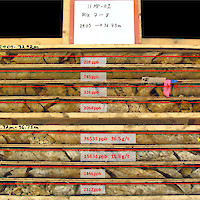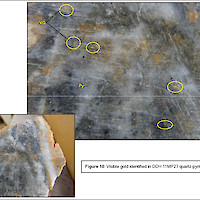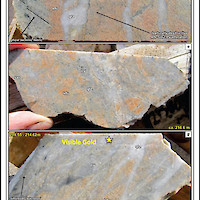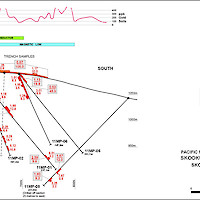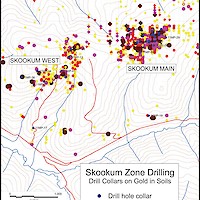Mariposa
-
Summary
The Mariposa property lies centrally within the Yukon’s White Gold District of the Dawson Range Mineral Belt, a regional major northwest trending structural corridor which hosts numerous gold and copper deposits. It is located 120 kilometres southeast of Dawson City, 40 kilometres southeast of White Gold’s Golden Saddle discovery and 30 kilometres east-northeast of Newmont's Coffee property. The property includes 1,438 claims covering a 30 x 10 km area, or approximately 295 km2.

The geological setting of the Property is similar to the White Gold and Coffee properties in terms of the host lithologies, the structural controls and brittle style of deformation and the nature of gold mineralization. Prior exploration identified an open-ended seven km long horizon of altered, pyrite-bearing quartz mica schist in the Skookum Zone area of the property. This unit is locally flanked by intrusive and mafic rock units, a setting favorable for hosting a gold-mineralizing system.
Recent prospecting at the Hackly Zone resulted in the discovery of mineralized float. Seven samples collected from quartz vein and stockwork material averaged 2.50 gpt Au and 5.67 gpt Ag, with the highest, 9.75 gpt Au and 15.7 gpt Ag from a hematite-rich sample of quartz vein (see Pacific Ridge News Release dated September 12, 2019).
Exploration Highlights
Significant drill intersections at Skookum Main, the best being 2.44 grams per tonne (“gpt”) gold over 39 metres (see news release dated July 28, 2011).
- Trenches in the Skookum Main area exposed widespread fractured, oxidized rock with local quartz breccias and veinlets. Best results included 1.25 gpt gold over 30 metres within a 150 m interval that ran 0.493 gpt gold1.
- 14 of 18 holes drilled at Skookum Main intersected gold mineralization within steeply dipping, brittle structures. The gold mineralized zone lies within an open-ended corridor of a large and strong gold soil geochemical anomaly that is closely coincident with a linear magnetic low that appears to define a structurally controlled alteration zone within the Mariposa Fault.
- Six high priority targets (Skookum Main, Skookum West, Big Alex, Maisy Mae, Hackly and Alberta Creek) defined by gold and multi-element soil anomalies identified within the Mariposa Fault Zone.
Geological Setting
The Property is located within the central Dawson Range, southwest-central Yukon, where it forms part of a regional polymetallic mineral belt associated with Early Jurassic to latest Cretaceous magmatism. It lies entirely within the Yukon‐Tanana Terrane (YTT). The YTT consists of Late Devonian to Late Permian metamorphic rocks, including various metasedimentary and metavolcanic assemblages and metaplutonic rocks. In the Dawson Range, the YTT typically includes metasedimentary and metavolcanic rock sequences predominantly composed of quartz‐mica schist and diorite gneiss. The magmatic episodes range in age from late Paleozoic to Tertiary.
The Mariposa property is underlain by a poly-deformed sequence of Permian through to Jurassic age metamorphic rocks that have been intruded by discontinuous bodies of mafic – ultramafic intrusions, Cretaceous quartz monzonite and granite intrusions, and feldspar porphyry dykes and small intrusive plugs. The Permian to Jurassic rocks are considered to be ‘basement’ and host gold mineralization on the Mariposa property where they form a NW-striking, variably NE-dipping sequence.
1Yukon Assessment Report 096551, 2012.
